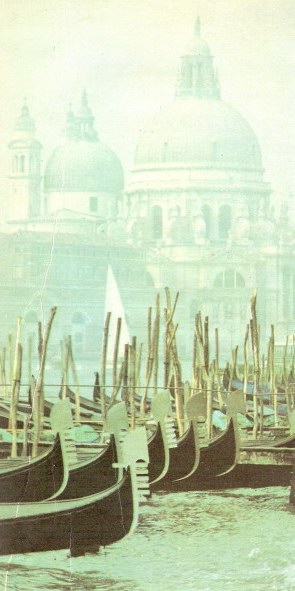|
|
Venice
By Pál Kelemen
Many garden patches are visible. The low-lying sandbanks are empty, with an occasional boat drawn up upon them. Yet many of the monuments that make Venice what it is today stood there in 1500. The buildings facing the Canal Grande already display the Byzantine, Venetian-Gothic, and Renaissance styles side by side, which later accommodated also the Palladian and the Baroque in splendid harmony. The only bridge that spans the main artery of the town is of wood, with a center section that can be lifted for the passage of ships. For the magnificent Rialto Bridge of stone was not built until nearly a century later. Many of the big churches, each with its campanile, or bell tower, can be recognized among blocks of dwelling houses. While full attention was paid by the draftsman to the island of San Pietro at the entrance to the arsenal, to the Giudecca on the south, and the Isola di San Giorgio Maggiore at the entrance to the Canal Grande, the focus is on the Ducal Palace and the Basilica of San Marco. In the foreground, heavy masted vessels clog the harbor, with an empty space along the quay at the end of the Piazzetta where gondolas ride. A gigantic Neptune is mounted on a monster dolphin. His left hand holds a chain to harness the animal, and his right, a banner proclaiming the port to be his residence.
Source: El Greco Revisited: Candia, Venice, Toledo
|
|||
This website is created and designed by Atlantis International, 2006
This is an unofficial website with educational purpose. All pictures, and trademarks are the property of their respective owners and may not be reproduced for any reason whatsoever. If proper notation of owned material is not given please notify us so we can make adjustments. No copyright infringement is intended.
